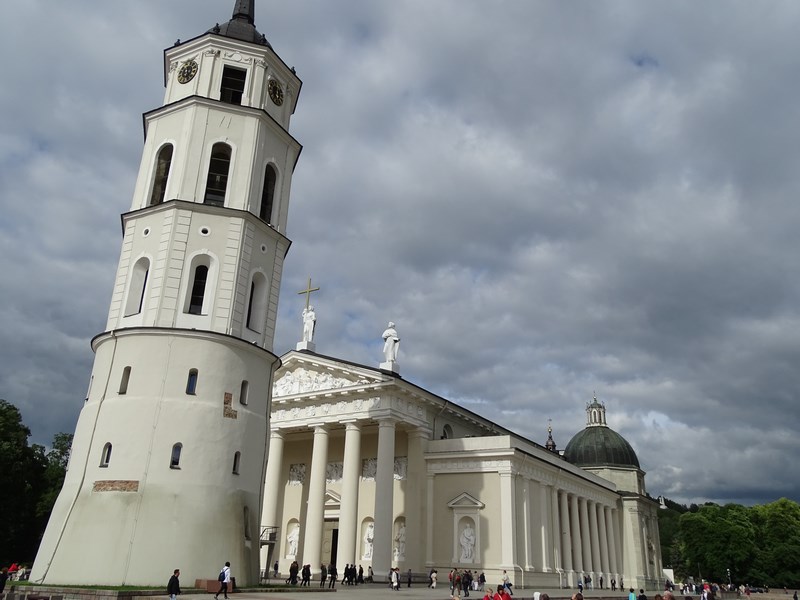Iran – Discovering the Traces of Old Persia in the Islamic Republic. Episode 2: Teheran
You cannot take a walk trough Teheran without noticing the countless mural pictures. The majority depicts Imam Khomeini or the others Ayatollahs, lots of martyrs from the Iran- Iraq war, but also anti- American pictures.
In order to explain a bit the Iranian mind- set I have to emphasize that they are a nation that is completely distinct from their neighbors. First of all, they are not Arabs, they are Persians. Their language is completely different from the Arabic one, so is the history, they being the heirs of the famous Persian (destroyed by Alexander the Great) and Parthian Empires, that fought centuries quite successfully over centuries with the Greeks and the Romans. Traditional Persian religion was the Zoroastrianism, one of the first monotheist religions in the world, which worshiped one supreme god – Ahura Mazda. Although today most of the Persians are Muslims, there still exists small Zoroastrian communities and a lot of them blame the Arabs for bringing the Muslim civilization to Persia. Although having seen Zoroastrian signs on the neck of many men, they continue to be loyal Muslims, one of the many paradoxes in the today’s Iran.
A second major difference is Persians are Shiites and not Sunnites. As the Christians are divided in Catholics, Orthodox, Protestants, etc, the Muslims are divided into two main branches and a few secondary ones. The huge majority of the Muslims are Sunnites, but the huge majority of the Iranians are Shiite (only the Arab Bahrain and the Turkish Azerbaijan have Shiite majority). The divide originated from the power fight after the death of the Prophet. A part of the faithful considered that the supreme leader, the caliph, can only come from the family of the Prophet and they supported Ali, the son-in-law and nephew of Mohammed (Shiites comes from the “si’at Ali” – the party of Ali), while the other side claimed that any right-faithful Muslim can become a caliph and supported the anti-Ali party represented by Abu-Bakr, Omar and Osman, the next caliphs after the death of Mohammed. At a certain moment, Ali managed to become a caliph, thus becoming the fourthcaliph. He was murdered by tribemen from an area of Iraq and is buried in the great mosque from Najaf, today in Iraq (the Afghans claim however that after death, his body was transported to Afghanistan, so there is a second mausoleum of Ali, at Mazar-e Sharif, north of Kabul :).
After Ali, his son Hassan, the second Shiite imam followed in lead, but he was poisoned an year after the assassination of Ali. The third imam is also one of the most important – Imam Hussayn, also son of Ali and a nephew of the Prophet. He did not become a caliph, the power being seized by the anti-Ali side, but Hussayn is the one who officially declared the schism between Sunnites and Shiites, leaving Mecca together with his family and his supporters. In the year 680, he led an army of 72 men against an army of 10.000 (or 30.000 according to other sources) and obviously he and all his men died in the battle. From that moment, the Shiites consider themselves in a permanent mourning and the commemoration of the battle (Ashura) is celebrated through self-whipping of the faithful which self-punish themselves in this way because their ancestors did not support Hussayn in the crucial battle of Kerbala.
According to the Shiite tradition, unlike the rest of the Muslims, they recognize 12 imams, all from the family of Mohammed and Hussayn. All died as martyrs. The last imam, the 12th, is the “Hidden Imam”. He did not die, he just hid and will return at the Final Judgment together with Jesus Christ. That is why the celebration of the martyrs is exacerbated to the maximum in the Persian culture. Everywhere, there are paintings with Ali and Hussayn and becoming a martyr is a honor for the great majority of the Iranians. The memory of the martyrs, either the ones from Kerbala or from the Iran – Iraq war from just three decades ago is preserved by an out of the ordinary cult of the martyrs.
Let me pass over these and let’s continue my walk through Teheran. Finally, we reach Iran Air’s office. We bought our plane tickets without any problems. Unfortunately, the days when any plane ticket in Iran used to cost two dollars, passed for a few years now, so that the flight Isfahan – Shiraz costs now the astronomic amount of 20 dollars (about an one hour long flight), all taxes, luggage, food and tea included.
And with this, I kind of finished everything I had to solve from a logistic point of view. This is why it was time for a tea in a trendy café from Teheran. As you can imagine, there are no night clubs and discos in Teheran (there are some underground parties in private houses, a lot of them pretty wild ones in which the women throw their chador or their scarves, put on the short skirts on Earth and they dance to house music), however the tea houses are everywhere. Unlike the Arab world, where you will rarely see a woman in a tea house, inIran, it is full of women. Couples or groups of friends sit at a cup of tea or coffee and discuss. If the women did not wear something on their heads, you would say that you are anywhere in Europe.
I will spend the rest of the day walking around the city. Teheran is a huge city. Some say that it has around 15 million inhabitants and its surface is enormous. The rich ones live in the Northern part, which is just below the mountain, or on the slopes of Tochal mountains (which have around 4000 meters !), while the proletarian southern side stretches in the fields. The climate between the neighborhoods from the Northern part and the ones in the South are completely opposed. There are days in which in the North it snows, while in the South, you get 40 degrees. In which other city in the world you can ski and you can get roasted by heat in the same moment? Obviously, everybody wants to live in the North to enjoy the coolness!
The tradition of the Bazaar is also continued in the modern trade. The Great Bazaar is in the south and all the commercial life gravitates around this labyrinth. In the North and in the mid-town there are numerous shops, but the tradition of the bazaar remains – there are entire boulevards where you can find only a certain type of products – you will find the avenues of shoes, the street with fisheries and even a market full of cafeterias. And since the area is well known for its extremely sweet and good cookies, I did not miss the opportunity to drink an Islamic beer and to eat some delicious cookies.
In the evening, we returned to the hotel. And as it was the Easter Sunday, we had red eggs and we wished “Christ is Risen” as per Orthodox tradition, this is why we brought the red eggs and cake the from back home… Also it was such a Persian feeling… to celebrate Easter in your room, which is in a parallel universe, far away from the official one from the street… The first day was for accommodation. Starting tomorrow, I am going to take step by step the wonders of Teheran.
Pictures of Teheran:
Iran Air
At the tea house
Under the protection of the imam
You will be surprised, but there are also huge paintings of the Virgin Mary
But let’s inspire ourselves also from his wisdom
Iranians cakes
And some various other delicious cookies
Which go perfectly with a beer with lemon
Tochal mountain in the background
On the streets, only the cats are playful
Because behind closed doors you can do whatever you feel like – Easter celebrating inclusive
Christ is Risen !













As for Virgin Mary, I have heard that if there isn’t a mosque, Muslims can to to a church to pray. Jesus Christ is considered a prophet by them, if I’m not mistaken. Might be related. Also, are there any murals NOT saying “Down with the USA?” 🙂
When someone writes an post he/she retains the plan of a user in his/her brain that how a user can be aware of it.
Thus that’s why this article is outstdanding. Thanks!
Iraq has also the majority Shiites as its population